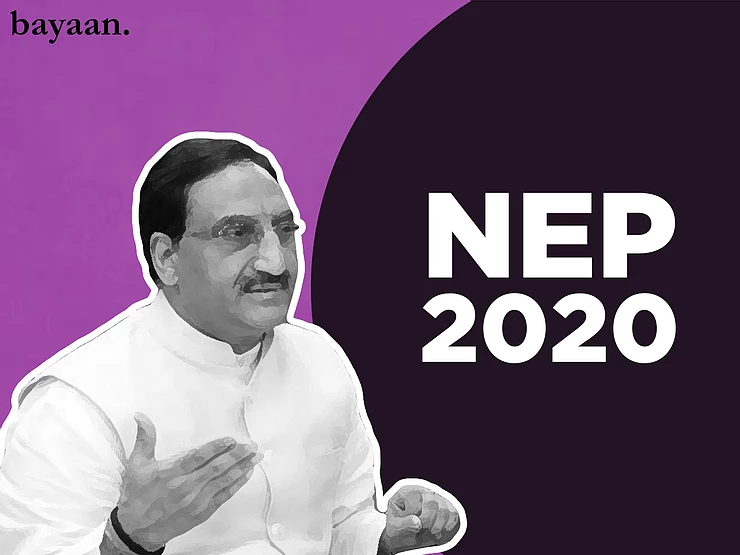While the policy is comprehensive in its nature, its considerations for Early Childhood Education seem too good to be true.
There has seldom been an educational reform that has received the kind of admiration that the New Education Policy of 2020 generated; mostly because we haven’t had such decisive action in the past three decades. I viewed it as a welcoming one, especially after the disastrous CAB.
However, once you look into the details of this policy, you realise that it promises way more than we can hope for it to deliver.
However, once you look into the details of this policy, you realise that it promises way more than we can hope for it to deliver. While the policy focuses on the entire education system, what I would like to focus upon on this blog is the steps it takes for early childhood care and education.
Before putting forward my opinions on this matter, I would like to mention that I understand the policy is in its nascency and we cannot determine its mettle just yet. However, what I really want to focus on are the most apparent challenges in its implementation.
I have had a very close interaction with early childhood education because of my mother. She has her own preschool in my city, Pune, and I have regularly worked with her whenever I get the time. One of the things that I have realised is that parents, irrespective of their social class do not understand the importance of early childhood education. Therefore, it becomes very difficult to convince them to invest in it.
It is also worthwhile to note that early childhood requires a lot of investment, sometimes even more than a primary school. This is because the teaching aids required for younger kids are more in quantity as well as cost in comparison to those required for children in higher standards. It takes a lot of effort to gain and maintain the attention of younger children.
Aside from teaching aids, the teachers also need to put in a considerable amount of time in preparing for classes. Usually, the teaching aids are prepared by the teachers themselves, either due to lack of funds or lack of accessibility. This increases their work hour to almost 8 to 10 hours a day in best-case scenarios. In spite of this, their salaries are usually lesser than those of their colleagues teaching in higher standards.
Pre-schools also require additional workforce in the form of ‘aayas’ or maids. These maids have to be constantly with the teachers and have to pay double the amount of attention to the young kids. Again there is a noticeable pay disparity in their wages.
Another thing that I would like to talk about is accreditation and certification. The policy in its current form seems to have taken into consideration only the preschools that run under the banner of consolidated primary and higher secondary schools and in the case of rural areas, anganwadis associated with private schools.
According to a report by Business Standard, as of the 2015 year-end, there were an estimated 33,000 preschools in India. These do not include the unregistered preschools. On the ground, there are preschools run inside 3 BHK homes of the teachers. This can happen because there is no system of accreditation. Currently, accreditation is required for classes 3 and above. There is no need for accreditation for lower classes. This poses a serious problem for many reasons. One of them is that the lower classes may or may not have the accreditation while the parent might be unaware of this. Secondly, this tends to result in a lack of uniformity and consistency in schools in the same area. Now if we are to make sure that there is at least a little consistency in early childhood education across the country, these preschools should be brought under the purview of accreditation.
To bear fruitful implementation of this ambitious policy, I believe the Government will have to prioritise its efforts towards ECCA.
While the policy talks of a new curriculum, the mention of accreditation for pre-schools find its mention along with other levels of schooling. It will be interesting to see if pre-school accreditation is given enough importance if at all. To bear fruitful implementation of this ambitious policy, I believe the Government will have to prioritise its efforts towards ECCA. It will require considerable investment on the parts of the state as well as the central governments.
Another thing that the Government will have to ponder upon is the methods in which it will encourage parents to send their kids to preschools. Incentives like mid-day meals and rations may work well in rural areas, however, in the urban areas a more definitive push in the form of ‘parent education’ will be required.
The Government should also focus its attention on extending the age bracket of the Right to Education Act to account for children from 3 to 6 years of age. The missing promise of doing so in the bill has made quite a few educators anxious.
However, with a Finance Minister dedicating only 6% of the total budget to education and an Education Minister claiming that the enrollment rate in primary schools is 100%, it will be interesting to see how the Government actually implements this ambitious and ‘path-breaking’ policy.
Another interesting thing I came across while reading about this policy was the fact that the early childhood care and education framework is focused on making a child school-ready. Even though I had read this word, the article by an early childhood researcher made me actually delve upon the need for a school-ready child. As I further think about it, it sounds like we are simply extending the age bracket of the rat race.
Since NEP is about education being inclusive and accessible, is the idea of accessibility addition to the existing rat race, or scoring a 100% mark to get into colleges? What does school-ready mean for the future?
Amatullah is a second-year mass media student at St. Xavier’s College, Mumbai. She has a keen interest in politics, media and entertainment.

